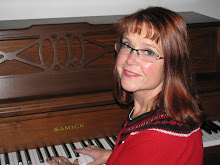The familiar lyrics to Over the River and Through the Woods were written by Lydia Maria Child, whose life reads like a chapter out of Little Women. A generation older than Louisa May Alcott, Maria Child was raised near Boston and was one of the first American women to earn a living by writing. She broke into the Boston literary scene with what might be considered an early nineteenth-century bodice-ripper titled Hobomok, in which a noble Native American falls in love with a white woman. After writing more novels and starting a children's magazine, Maria married a man who was active in the abolitionist and American Indian rights movements. Maria joined in her husband's political work, but his protest writings about the Cherokee Nation's forced removal from Georgia landed the family in social and financial peril. It also landed her husband in jail.
To bring in money, Maria wrote a book called The American Frugal Housewife, one of the first advice books directed toward women who ran their households without servants. The American Frugal Housewife became a money-maker, but sales plummeted when Maria wrote an influential and controversial abolitionist tract in favor of interracial marriage. Her children's magazine also had to close. Undaunted, Maria continued to write children's works, political tracts, and novels. Throughout her life she remained an unflinching and vocal supporter of civil rights for African Americans and Native Americans.
Over the River
Over the river and through the woods,
to grandfather's house we go.
The horse knows the way to carry the sleigh,
through the white and drifted snow, oh!
Over the river and through the wood,
oh how the wind does blow.
It stings the toes and bites the nose,
as over the ground we go.
Over the river and through the woods,
to have a first-rate play.
Oh, hear the bell ring, "Ting-a-ling-ling!"
Hurrah for Thanksgiving Day-ay!
Over the river and through the wood,
trot fast my dapple gray/1
Spring over the ground, like a hunting hound!
For this is Thanksgiving Day.
"Ma Said, 'Charles, those children never will get to sleep unless you play for them.' So Pa got his fiddle. The room was still and warm and full of firelight and Pa's fiddle sang merrily to itself...And Laura went to sleep while Pan and the fiddle were both softly singing...." Laura Ingalls Wilder
Bring the Learning Home
Sort it Out
Since learning about instrument families is simply an extension of the toddler task of learning how we organize the world, our daily chores provide countless opportunities to help children form vital brain connections. Put on one of your favorite CD's and whistle while you work during family ensemble time:
- Doing dishes: Keep your silverware in an easy-to-reach low drawer. Let your child put away clean forks, knives and spoons. Cont as you go-how many forks? How many spoons? With the silverware within reach, it's also easier to help set the table, placing the forks on the left and knives and spoons on he right. The left-right distinction can be a hard one, and this is an easy way to begin.
- Groceries: Keep can and dry goods in bottom cabinets. Place the grocery bags on the floor and let your child put those items away.
- Clean-up: How many magazine articles have you read that suggest organizing toys into baskets or shoe boxes? The good news is, not only does this make clean-up quicker, it's easier for your kids to help.
- Laundry: When you're loading the washing machine, let your child help separate the whites form the darks. When everything's dry, see if he can pair up his own socks and put them in his drawer.
Listen and Learn
Listen to all kinds of music-brass bands, African drums, classical symphonies, flamenco guitar, jazz piano-as you work, sing, and play throughout the day. Talk to your kids about what you're hearing. What instrument would produce that sound? What might the instrument be made of? How would it be played? Do we have anything like it at home?
Maple Magic
Listen to Maple Leaf Rag by Scott Joplin. He named that tune after the 'Maple Leaf Social Club', an African-American men's association in Sedalia, Missouri where he worked as a pianist. Maple leaves have a unique shape (another category!). Help your child find a particularly fine specimen of a maple leaf or any other nicely-shaped leaf. Place your leaf, vein side up, under a piece of plain white paper, and then rub the side of a crayon firmly on the paper. The shape of the leaf will magically appear.





No comments:
Post a Comment